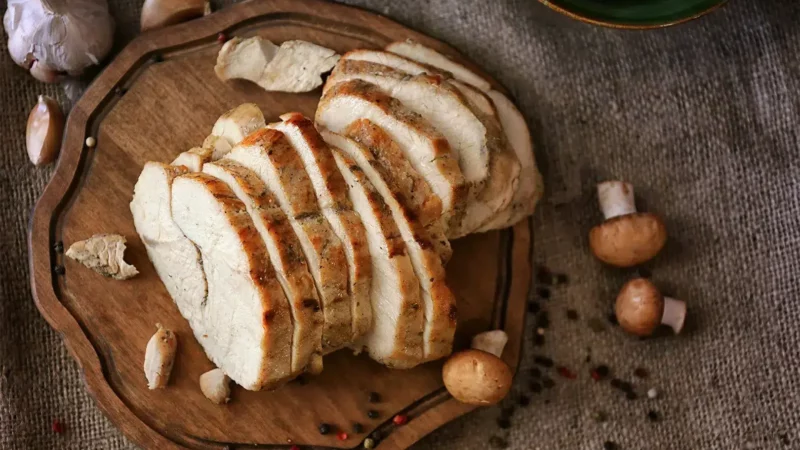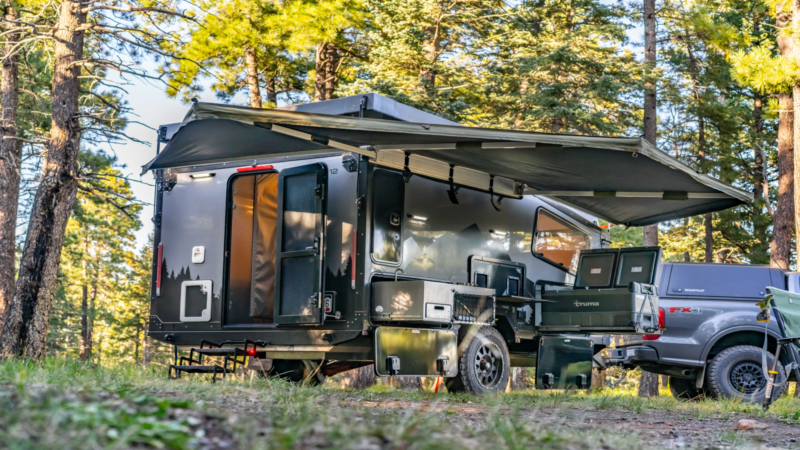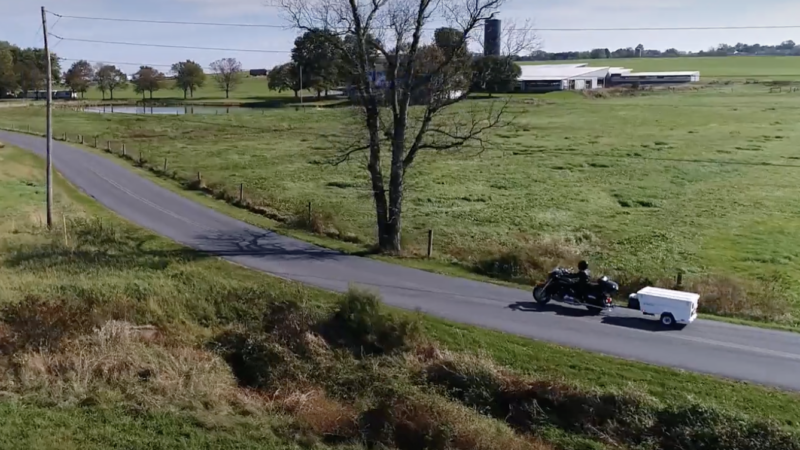The Ultimate Guide to Dehydrating Foods Dry it Out! | I Heart RVing
Dehydrating foods is a fantastic way to preserve fruits, vegetables, and even meat—especially when you’re on the road and have limited space. Not only are dehydrated foods easier to store, but they also retain their nutritional value as the long, slow process removes only water and not vital nutrients. Thus, the foods offer the same health benefits as fresh varieties. Today, we’ll explore the numerous benefits of dehydrating foods, the best foods to take on the road with you, and how to dehydrate in your RV.
Why Dehydrate Foods?
One of the biggest reasons to dehydrate foods for your RV is because they’re easy to store and transport. Dehydrated foods take up way less space when compared to fresh or canned foods. As we know, even a luxury RV has space and weight limitations. So, it’s a good idea to go lightweight and compact whenever possible. What’s more, properly dehydrated foods can be stored for months or even years. This extended shelf life means you have access to quality foods even if you park far from a grocery store and don’t have frequent access to fresh foods. Another benefit is dehydrating foods can help you save money. For instance, if you buy produce in bulk or when it’s in season, you can often get it for much better prices.
But it’s not always easy to eat, say, an entire flat of peaches or tomatoes. Fortunately, you can dehydrate what you won’t be able to eat immediately and enjoy the flavors of summer well into the winter months. This also helps minimize food waste while you take advantage of a surplus harvest. Because the process of dehydration preserves most of a food’s nutrients, including vitamins and minerals, you get the most out of your meals and can enjoy healthy, convenient snacks. Another bonus, they’re lightweight and easy to pack for your next hike, bike ride, and other outdoor activities as well as when you want something healthy to nosh on the drive to your next destination.
What Foods Can You Dehydrate?
Dehydrating foods is one of the oldest methods of preserving food. Thousands of years ago, long before we were able to refrigerate and freeze foods, ancient civilizations, including the Egyptians and Native Americans, used the sun and wind to dry their harvests. This ensured they had food supplies when food was scarce, such as during the long cold months or perhaps during prolonged
droughts. Dehydrated foods were crucial to our early survival as these foods could be stored for months or years without spoiling.
Of course, the practice has since evolved, with new technological advancements making the process more efficient. For instance, in the 18th and 19th centuries, industrial drying techniques were invented, which allowed the mass production of dried foods. Today, dehydrating foods remains one of the most popular methods of preserving foods. And with the advent of electric and solar dehydrators, this method of food preservation has become more accessible and convenient from your home or RV.
Just like our ancestors, we can take advantage of surplus harvests and dehydrate fruits, including apples, pears, bananas, strawberries, pineapples, and mangos. Vegetables like carrots, bell peppers, tomatoes, zucchini, and kale can be dehydrated to later add to warming winter soups, stews, casseroles, and other dishes. You can also dehydrate a variety of meats into beef, chicken, or turkey jerky. Fish and tofu can also be dehydrated and stored for future meals. Don’t forget herbs and spices, mushrooms, onions, and garlic. And if you’ve ever bought beans and lentils or
grains like rice and quinoa, you’re taking advantage of industrialized food dehydration.
Dehydration Methods
There are several different methods to dehydrate foods. One of the most popular and efficient methods is with an electric dehydrator. You need a standalone device, but there are compact and
portable models available for tight spaces. They come with adjustable temperature and time settings, which ensure consistent and even drying. If you don’t have the extra room for a device, you can also dehydrate foods in your RV oven. Just set it to the lowest temperature and place an even layer on baking sheets. As it dehydrates, keep the oven door slightly open, which allows moisture to escape. You will, however, want to monitor the dehydration so you don’t over-dry or burn your food.
Another method is gaining popularity as it’s so eco-friendly and inexpensive. And that’s solar drying. If you will be spending time in a sunny location, you can use a specially designed solar dehydrator or drying rack that’s collapsable and easy to store. Or, you can place the food on trays, cover it with fine mesh to protect it from insects, and let the sun do the work. Similarly, air drying works well for some herbs and greens. If you have a hot, dry, well-ventilated area, you can hang your foods and let them naturally dry out. It takes a while, and weather can impact how well it works, but it doesn’t require any special equipment or power.
How to Dehydrate Foods
The easiest way to dehydrate foods for a consistent product is to use a food dehydrated. Set it up in a well-ventilated area of your RV with access to a power source. Make sure you place it away from direct sunlight or any heat-sensitive materials. Once you’re ready to dehydrate, you’ll need to prepare your food. Start by washing and drying it thoroughly. Then, slice it as uniformly as you can. (You don’t have to be perfect, but you want the pieces to be pretty similar in size.) Thinner slices dry faster. Some fruits and vegetables do better if they’re either blanched (green beans, broccoli, cabbage, carrots, peas, squash, etc.) or dipped in lemon juice (apples, apricots, bananas, peaches, pears, etc.) to prevent browning.
Next, arrange the food slices in the dehydrator, being careful not to allow the foods to overlap. Set the dehydrator to the appropriate temperature for the specific food. It’s typically between 125 and 160 degrees F. Allow the food to dry until it reaches the desired level. If you’ll be snacking on fruits, for instance, you’ll want to make sure it’s crispy. But if you’ll be storing it for later to use in soups or casseroles, you may want it to be a bit more pliable. Before you store the dehydrated foods in airtight containers (to protect them from moisture and air exposure), make sure they’re completely cool. Then, label the containers with a date and the food type, so you’ll know what you’re grabbing, even months later.
Nomadic humans have been dehydrating foods for thousands of years
Dehydrating on the Road
Nomadic humans have been dehydrating foods for thousands of years, and for good reason. With the right equipment and know-how, you can enjoy a variety of healthy, delicious, and easy-to-store foods no matter where your next adventure takes you!
Source: https://iheartrving.com/magazine-articles/the-ultimate-guide-to-dehydrating-foods-dry-it-out/








